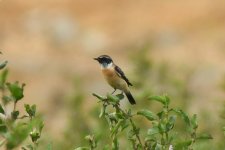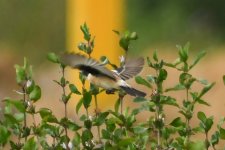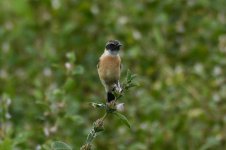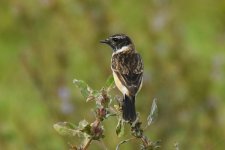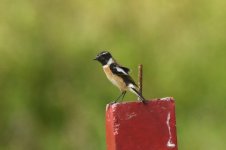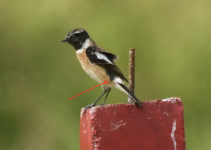Hi. Separating Stejneger's and Siberian Stonechat is one of
the challenges in modern birding, oddly especially adult males. The features by which you might be able to do it are not especially well shown on your images.
Notably, I would go for the size of the white rump patch, which is limited in Stejneger's and more extensive on Siberian, on which it often extends up to the base of the tertials and can sometimes be visible above them. The extension of black onto the lower back on Stejneger's makes the rump/uppertail covs look like a down pointing pale triangle as opposed to a 'lozenge' on Siberian; the black feathers of the lower back in turn creates (to my eyes) an area of black sometimes visible arcing round the rear flanks - as can be seen on the annotated image here:
View attachment 1486603
The wear/loss of upper tail coverts makes it hard to evaluate (I am probably imagining a black shaft streak in one of the later images).
Anyway, a tough one and I wait to be proven wrong, which would not be the first time.
Brian







